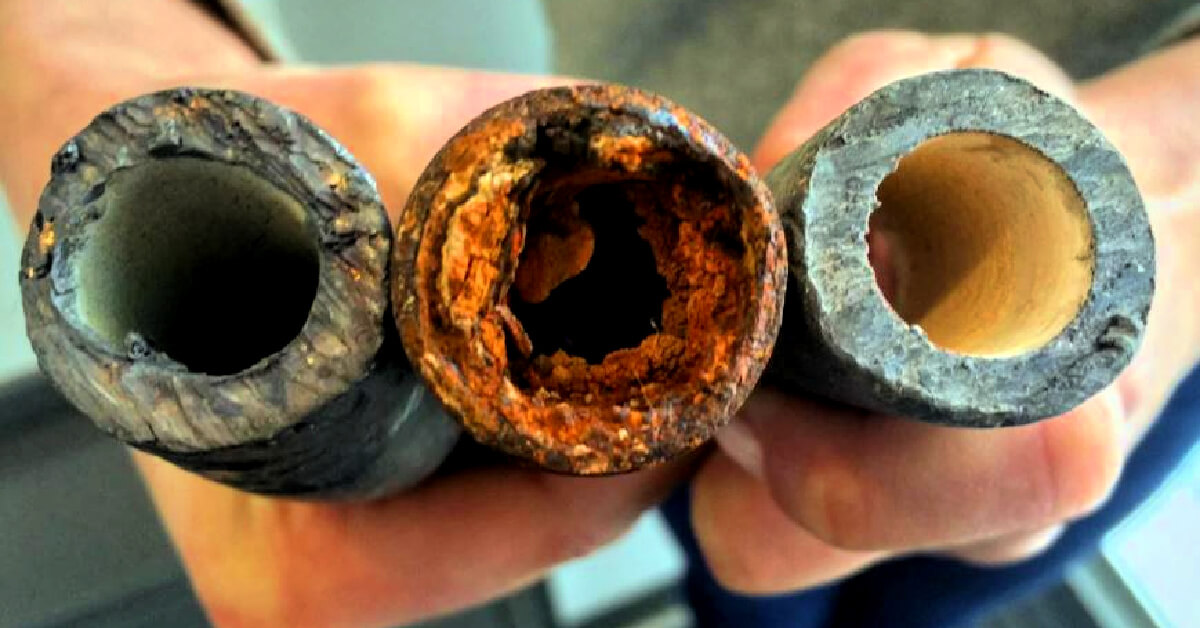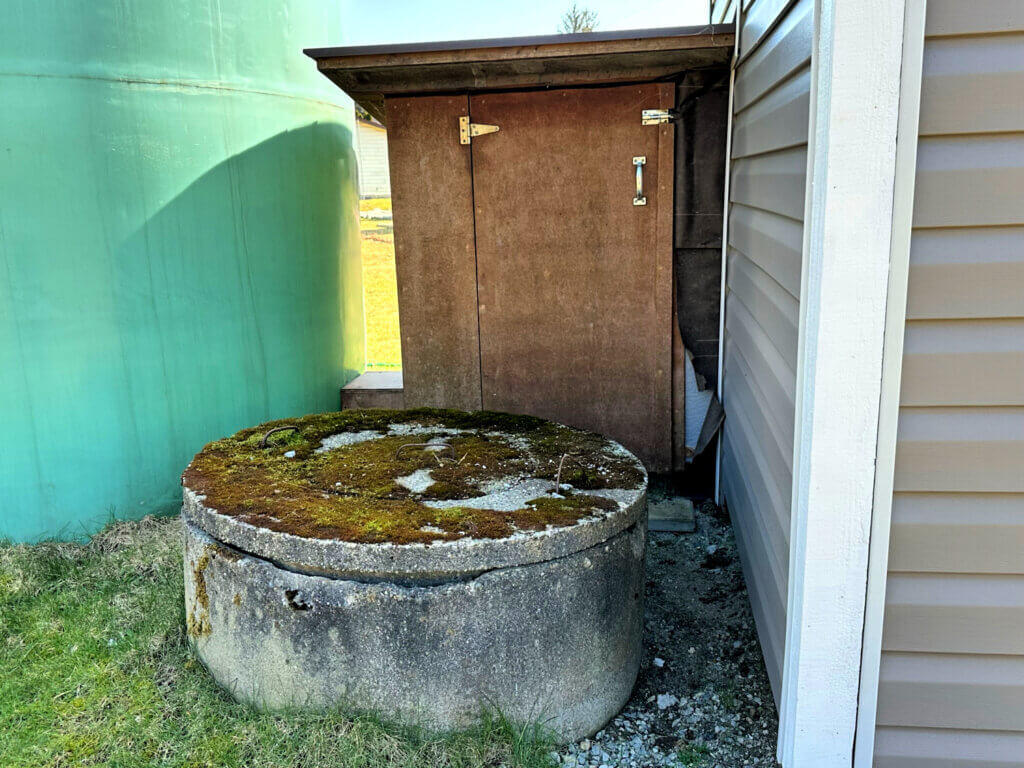
Can a water well run dry? Yes, you bet a well can run dry, especially as water is extracted from an aquifer more rapidly than it recharges. The water level in a well continues to decrease to the point of a dry well.
Introduction: Is My Well Running Dry?
Discovering that your water well has run dry can be distressing and puzzling for rural homeowners who rely on wells for fresh water. This article will explore the various factors that can lead to a dry well. We discuss short-term fixes and potential solutions to address this issue.
What Causes a Water Well to Run Dry?
A water well typically goes dry due to changes in the water table level. The water table, the uppermost level of ground saturated with water, can be influenced by several factors, including prolonged periods of low rainfall, overuse of groundwater in the area, or geological changes underground that disrupt the water flow.
Consequently, if the water table drops below the well’s depth, it may no longer reach the pump, causing the well to dry up. Monitoring and managing water consumption responsibly is essential to maintain a stable water table level when possible.
It is more common for shallow or dug wells to run dry, but deeper drilled water wells can run dry too. Remember, even though groundwater resources may seem unlimited, they are not. Sustainable usage and management practices are crucial for maintaining these water supplies.
Dug wells often accumulate water that seeps in from the surrounding geologic formation in areas without significant aquifers.
The water table may have dropped below your well during a dry year. This leaves little to no water in the formation to seep in. Many dug wells struggle during the warmer months, forcing property owners to use the local bulk water delivery service.
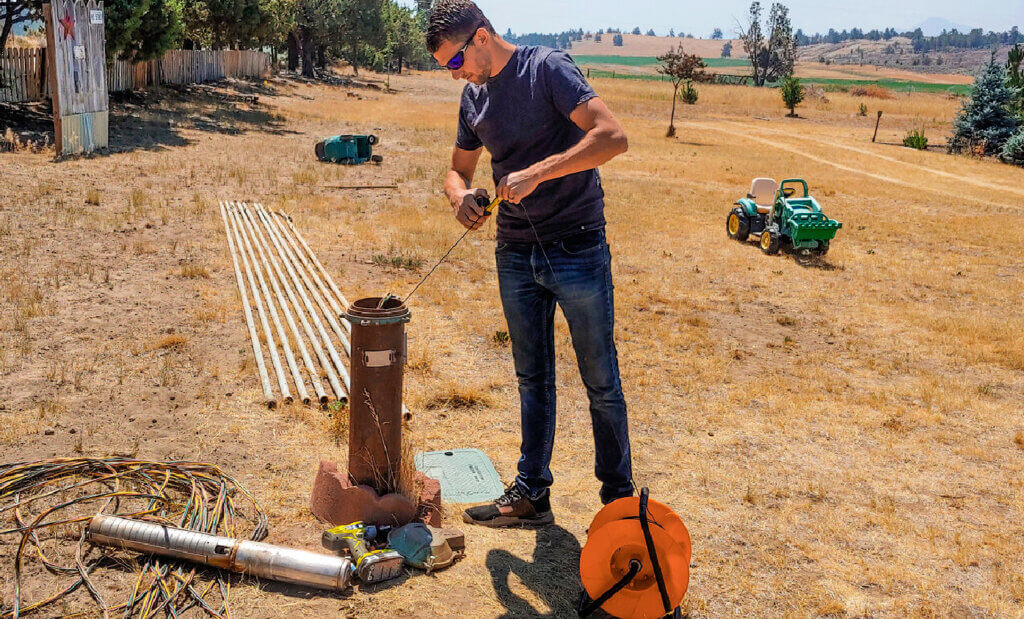
Let’s Look Closely at the Possible Causes of a Drying Water Well
- Depletion of the Aquifer: Depletion of the aquifer that supplies a well is the most common cause of wells going dry. In most cases, caused by excessive groundwater use without sufficient recharge from precipitation or surface water. Aquifers can take years, decades, or even centuries to recharge naturally. Your well may deplete if the water demand surpasses the aquifer’s recoverability.
- Drop in Water Table: The water table in an area can drop due to several factors, including drought, overuse of water in the area, or changes in the surrounding environment. If the water table drops below the level of the well, the well will run dry.
- Physical Changes to the Aquifer: Sometimes, the aquifer itself can change. Sediment and mineral deposits may clog the well screens or reduce the permeability of the aquifer. This will make it more difficult for water to enter the well.
- Water Well Interference: Common when multiple wells draw from the same aquifer. Overpumping one well may cause nearby wells’ water levels to drop, potentially causing them to run dry. Always important to consider neighboring water wells. A large capacity well for irrigation or industry is nearby. It has lowered the water levels in the aquifer below your pump, also known as well water interference.
- Seasonal Changes: Some water wells can run dry in certain parts of the year when the water demand is high, or recharge is low. It’s important to note that water wells can also recover if the situation reverses.
- Climate Change: Changes in weather patterns can impact long-term aquifer levels. Areas seeing less rainfall and more heat may see drops in their water tables, affecting wells.
- Water Well Problems: A poorly designed or maintained water well system can contribute to it running dry. Other issues, such as water leaks, may also contribute.
“We share more than a community we share our water”
— Colleen Roberts
Solutions for Dealing with a Well Running Dry
As a private water well owner, your options vary when faced with a drying water well situation, depending on the kind of well you have and the geologic conditions in your area. You may have very few options if you have a shallow dug or bored (augered) well.
The water table may have dropped below your well if it’s a dry year. This will leave no water in the formation to seep in.
Inspect your water well to see if it is dry or if the water level in the wells has dropped below the pump intake. If so, you can lower your pump and hopefully still have water.
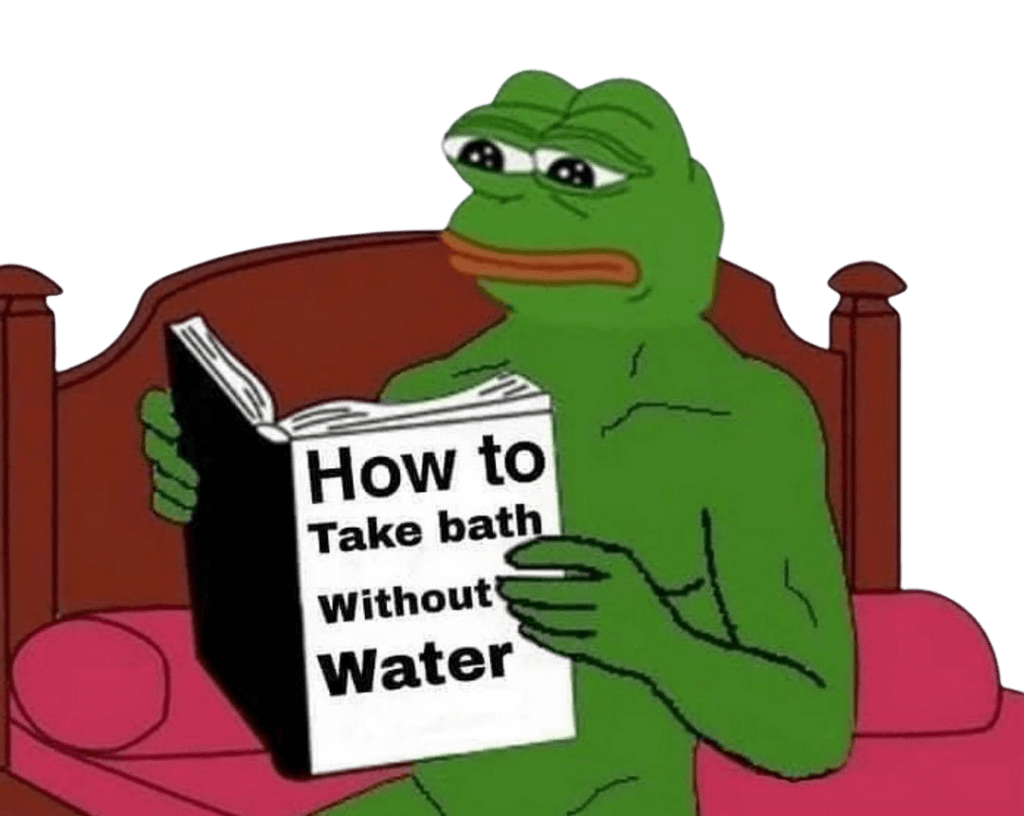
Well Run Dry: Your Best Short-Term Options
If your well is dry, your best short-term option is to have a potable water storage tank as a backup system when needed. You can have bulk water delivered or haul it yourself from a local source.
Before filling your water storage tank with bulk water, disinfect all the pipes and equipment.
Also, speak with your neighbor, and ask if they would be willing to share their water supply with you temporarily. Sometimes one water system can be connected to another if they are close enough. Be prepared to discuss how you can compensate your neighbor for costs.
Water Testing is Essential for Storage Tanks
If you are concerned about contamination, boil the water until your water is tested, and you receive the results. Hopefully, the source water delivered to your water storage tank is potable, as most property owners may need the ability to disinfect the water on a temporary system.
If you have a contaminated water storage tank, it will quickly contaminate the water stored within. Sterilize the water tank, water pipes, and attachments first!
You can order a water test kit online and send the sample to a water testing lab for a very reasonable price. Always lien on the side of caution regarding your drinking water supply. As a property owner, contaminated water can become a liability, especially if someone gets sick!
Get the Cost to Install a Water Storage System
Polyethylene (Poly) is widely used in the manufacturing of water tanks due to its popularity and versatility. Also known as plastic tanks or poly tanks, they offer various advantages such as the ability to be molded into different shapes and easy installation due to their lightweight nature.
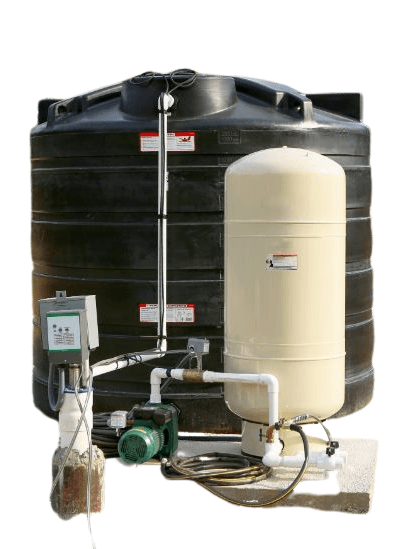
Drying Water Wells Prompt Need for Water Conservation
Practicing water conservation until the situation changes will limit the amount of water you need to haul. If you have lived on your property for a while, you probably have had your well run dry before and may already have a solution.
Water Conservation Strategies for Rural Properties
If not, speak with your neighbors and determine if your well running dry is common. Your dry well problem may happen for a few weeks in the summer, or it could be an unusual year.
If this is a regular occurrence, consider a more permanent solution if one is available. For example, another option would be to drill a new well.
Generally, large-diameter dug water wells are not preferred anyway because the water supply is closer to the land surface. But if that’s the kind of well you have, it may be because your area has no aquifers available for water supply.
Many shallow wells are dated; they’ve likely been a problem for the property owner for years. These water wells often need to be replaced with reliable drilled well. Inspecting a water well system before purchasing land for sale with a private water well is vital; it could save thousands of dollars.
Water Well Drilling and Repairs
Make an informed decision: Consider the recommendations, estimates, and any other factors such as your budget and water needs. Assess whether repairing the existing well is feasible or if drilling a new well is the best option. Consult with a well driller to clarify any questions or concerns you may have before making a decision.
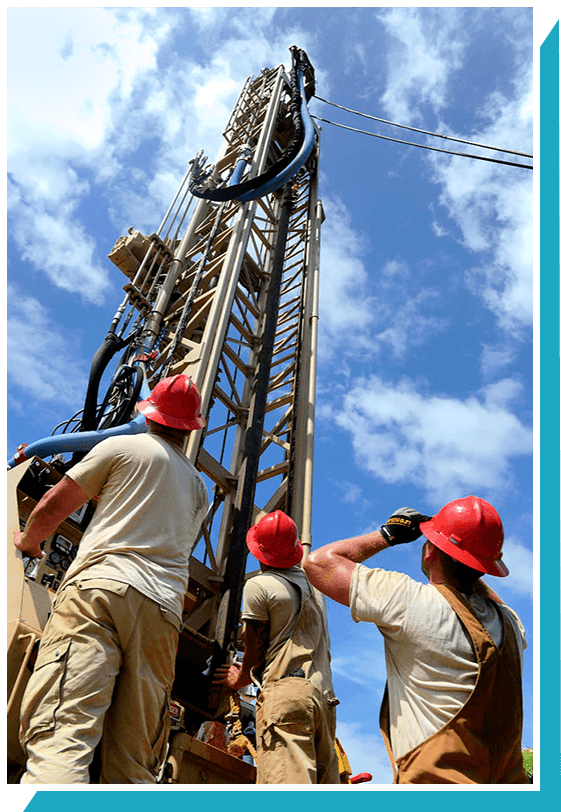
Understanding the Costs Associated with Drilling a Water Well
To learn more about your well, contact the agency responsible for maintaining well logs in your state or jurisdiction, your provincial or state geological survey, or a local well drilling company, and find out your options.
Sometimes drilling deeper will succeed if a well is in a sand, gravel, or bedrock aquifer. However, your well may not be dry, but the water level has dropped below the pump intake. Have the water well investigated before doing costly water well repairs.
Contact well drilling companies near you. They will help you assess your situation and provide the estimated cost to drill a well in your area or the cost to deepen your well if possible.
If you need the well assessed, you can also speak with a water well pump expert; they can determine the water level in the well and inspect the equipment to verify that you have a well run dry and not some other issue. Always seek the advice of two or three experts before committing to spending money on a water system. If a well is dry, it should very quickly be determined by a water well drilling company or a water well pump expert.
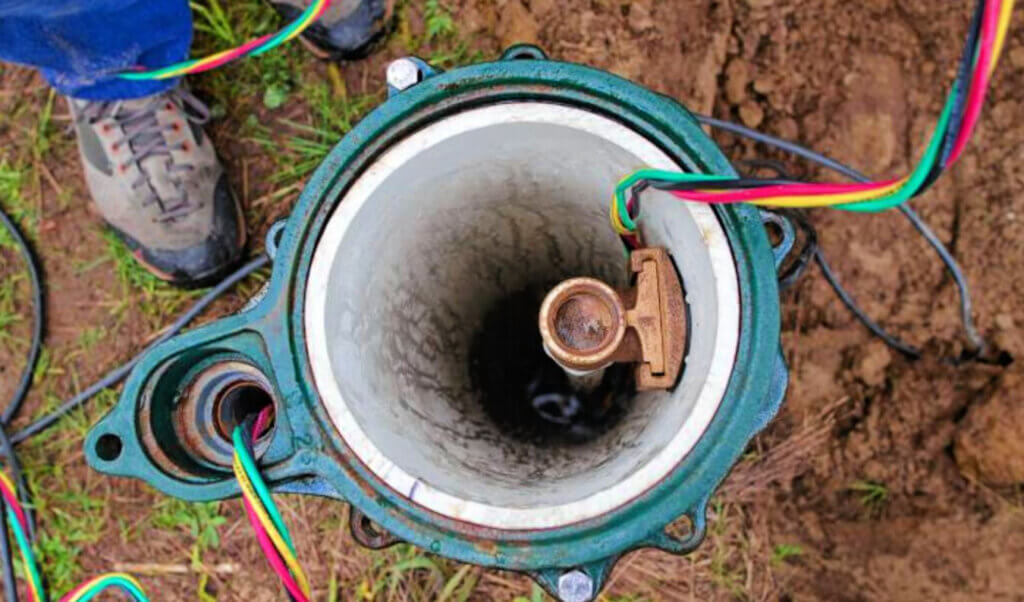
Monitoring Water Levels and Pump Setting Depths: A Crucial Step for Efficient Water Management
For this reason, monitoring and keeping water level measurements and pump setting depth in your records is important. I often recommend installing a sounding tube when putting down the well pump, making it easier to measure the water level in the well.
If you determine that water is still in your well, your pump should drop below that depth; it may be a fixable problem without much cost.
If lowering the well pump or foot valve won’t help, you may need to consider options for drilling deeper but drilling the well deeper will not always work either. Throwing good money after bad is easy to do with water wells, so get a few opinions.
It may depend on where the bottom of your well sits within the aquifer and what other aquifers are nearby. Let’s say a water well is finished near the bottom of an aquifer. A water well driller refers to this as bottomed-out. In that case, drilling deeper may only be an option if another deeper usable aquifer is available.
On the other hand, drilling deeper will be an option if plenty of aquifer depth is below the well. In some areas of California, where they have long-term droughts, water levels in some aquifers have dropped 200 to 300 feet or more, and many private wells have gone dry.
The only solution in some areas is to drill a new, much deeper well. A log of the well, also called the drilling report, should indicate the depth of the well and the production rate (yield), if available. You can use aquifer information from your state or provincial agency of aquifer mapping and your local driller’s expertise to determine if a deeper well would be an option.
Revitalizing Your Water Supply: Expert Water Well Maintenance and Pump Repair Solutions
Suddenly now water in the house? Reliable water well pumping system with our expert water well maintenance and pump repair solutions. 💧 Trust the professionals to protect your investment and ensure a healthy, dependable water source for years to come! 🏡✨
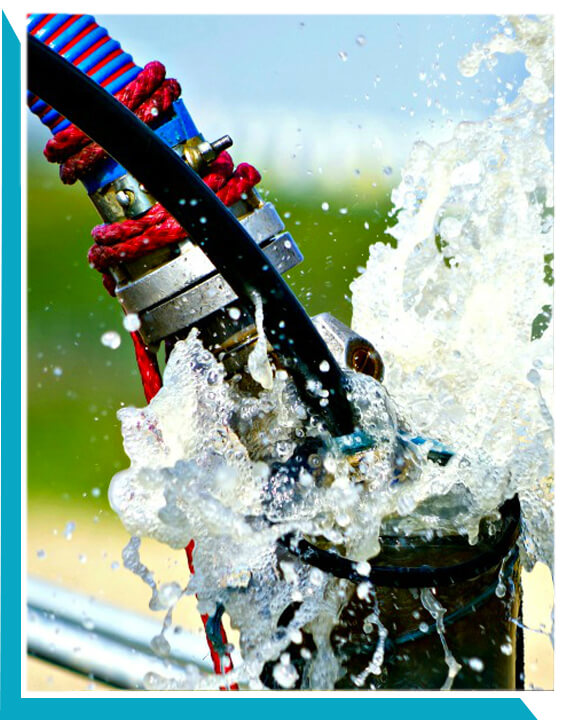
Dealing with a water well run dry can be challenging, but there are several potential solutions to consider:
Water Conservation: Implementing water conservation measures can significantly extend the water supply. Simple steps like fixing leaks, using efficient appliances, and practicing responsible water usage habits can reduce the demand on the well.
Recharge Techniques: Various methods exist to replenish the aquifer depending on the area’s hydrogeological conditions. These methods include rainwater harvesting, redirecting surface runoff to recharge areas, and implementing artificial recharge systems.
Water Well Deepening or Relocation: Deepening the well to access a deeper aquifer or relocating the well to an area with better water resources often needs to be considered and weighed out. However, a professional assessment is crucial to determine feasibility and potential impacts.
Professional Assessment and Maintenance: Engaging the services of a qualified hydrogeologist or water well expert is crucial in evaluating the water well system and identifying potential issues. Maintaining the well regularly, including cleaning and inspecting it, can prevent dry well problems.
Exploring Alternative Water Sources: If all else fails, connecting to a municipal water supply, drilling a new well, or using water hauling services may be necessary to meet water needs.
The most important lesson for “local water wells that run dry” is to prioritize sustainable water management practices and community engagement to ensure long-term availability and equitable access to clean water for all.
— Science for a Changing World
Conclusion:
While the occurrence of a well that has run dry can be distressing, understanding the causes and available solutions can help property owners with private water wells navigate this challenging situation.
Learn More About Rural Living with Colleen Roberts
Water Conservation Strategies for Everyday Life
Complete Guide to Repairing a Well that Runs Out of Water
What is the Cost of a Well Pump Replacement?
2023 Guide to Test Lead In Water
Home Drinking Water Fact Sheet
Learn About Private Water Wells
Canadian Drinking Water Guidelines
EPA Drinking Water Regulations
USDA – Install or Repair a Well

Get a monthly update of our most popular articles directly to your inbox such as Water Well Advice including Water Testing, Well Drilling... what you need to know when buying or selling Real Estate with Water Wells, Septic Systems & many other rural living topics!




